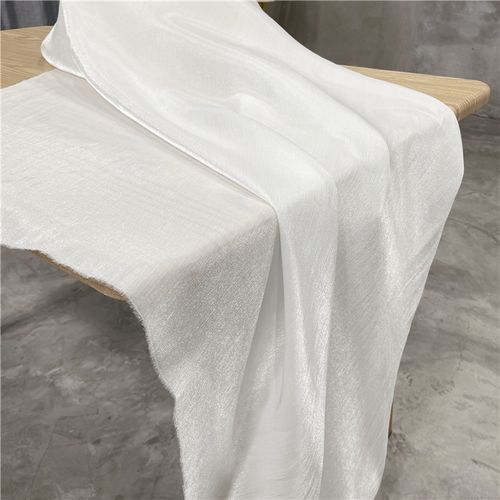With the increasingly severe global environmental problems, energy conservation, emission reduction and green environmental protection have become an inevitable path in the process of development. In the bleaching of textiles, those bleaching methods that have adverse effects on the environment and human health need to be gradually replaced. The ecological bleaching method with low pollution, low energy consumption and high efficiency has become the future development trend of the industry.

Ozone bleaching
Ozone is a good decolorizer. Its oxidation capacity is several times that of oxygen. It is recognized as one of the strongest oxidants at present. Ozone has good decolorization ability, so many experts and scholars envisage applying ozone to textile bleaching. However, ozone bleaching is still in the laboratory research stage and has not been actually put into use. If we can break through the technical difficulties, we believe that ozone bleaching will have a huge market space. The bleaching mechanism of ozone bleaching method is to convert oxygen into ozone through certain devices.
When ozone is used as bleaching agent to bleach textiles, it can be decomposed into oxygen and [O], in which [O] can oxidize the pigment in textiles, so as to achieve the effect of bleaching. The textiles bleached by ozone bleaching are better than those bleached by hydrogen peroxide bleaching in hand feel and bleaching effect, and the key is that the raw materials of this bleaching method are easy to obtain, that is, the air available everywhere. Therefore, ozone bleaching is a feasible choice. Expanding its commercial value can not only greatly save costs, but also bring good results.
Active hydrogen peroxide bleaching
Hydrogen peroxide bleaching is the most widely used and mature process in the printing and dyeing industry. The only disadvantage is that it consumes a lot of energy, which will affect the processing cost, which has become the key factor restricting the development of hydrogen peroxide bleaching.
At the end of the 20th century, researchers proposed a new bleaching technology using active hydrogen peroxide as bleaching agent, which was gradually favored by printing and dyeing enterprises. Although the hydrogen peroxide activation system has many advantages, its shortcomings gradually appear in the development process. For example, the production of activator is difficult, the price is high and the cost performance is low. In addition, there is room for optimization in the use of activators and hydrogen peroxide. These problems have also become a stumbling block to the development of active hydrogen peroxide bleaching.
Peracetic acid bleaching
Although peracetic acid is excellent in bleaching, it has problems in other aspects. Peracetic acid is easy to decompose in the presence of metal ions, so an appropriate amount of stabilizer needs to be added. The commonly used stabilizer is sodium pyrophosphate, but sodium pyrophosphate is not an environmental friendly stabilizer, which is in contradiction with the concept of ecological bleaching; In addition, peracetic acid has poor stability and the risk of explosion, which brings great inconvenience to storage and transportation.
Biological enzyme bleaching
Biological enzyme is a natural macromolecular substance. Mild reaction conditions, high specificity and high catalytic efficiency are the advantages of biological enzyme bleaching. This bleaching method hardly produces toxic substances harmful to human body or polluting the environment, which is consistent with the concept of green production and development frequently put forward in recent years.
Therefore, more and more enterprises begin to use biological enzymes to pretreat natural fibers. Amylases for desizing and cooking cotton and flax are widely used, and the process flow is also very mature. However, biological enzymes are floating .People have high expectations for the research and application of glucose peroxidase and laccase bleaching.
Electrochemical bleaching
Electrochemical bleaching is a new idea of textile bleaching. It produces bleach through electrolysis of low-cost and pollution-free chemical reagents, so as to effectively reduce the cost of bleach and storage of bleach, improve the stability of bleach and reduce the pollution of bleach to the environment. However, the domestic research on Electrochemical Bleaching mainly focuses on the bleaching of pulp and wastewater, and basically does not develop in the direction of the textile industry. However, there are studies on these aspects abroad. It is necessary to communicate and learn with foreign researchers to expand the application of electrochemical bleaching in the field of textile industry.

